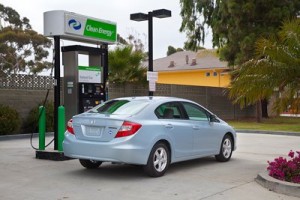Natural Gas for Transportation
Natural Gas for Transportation
 Cheap natural gas is leading us to reexamine how America’s fleet is fueled.
Cheap natural gas is leading us to reexamine how America’s fleet is fueled.
Tony Martin/Motor Age — It seems like we’ve been here before. Natural gas is coming back into focus as a transportation fuel in North America, despite a false start from 20 years ago. There were numerous reasons for it’s initial failure, including a lack of fueling infrastructure and less-than-durable natural gas engine technology. While natural gas vehicles (NGVs) have advantages over liquid-fueled vehicles, their disadvantages are not insignificant. So what is different now, and are we witnessing the beginning of a long-term trend?
Worldwide, there are 14.8 million NGVs in operation, but only 112,000 of those travel on American roads. Natural gas is used extensively for heating and power generation in the U.S., but only one-tenth of 1 percent is currently used for transportation. It would seem that NGVs are almost starting from zero in the United States, but the numbers are currently increasing and are projected to continue upwards.
Probably the major driver in the NGVs’ recent growth curve is the price difference between gasoline and natural gas. According the federal Department of Energy Clean Cities Alternative Fuel Price Report (July 2012), the national average price for a gasoline gallon equivalent (GGE) of compressed natural gas (CNG) is $2.05. This is quite attractive when compared to an average price of $3.52 for a gallon of gasoline, or $3.75 for a gallon of diesel. With the potential for significant fuel cost savings, fleet managers and consumers alike are taking a closer look at natural gas as a transportation fuel.
Advantages of Natural Gas
Natural gas is a fossil fuel, often produced simultaneously with crude oil. However, it is also common for natural gas to be produced by itself as “dry gas.” Natural gas is comprised mostly of methane (CH4), which is the simplest and lightest hydrocarbon. Natural gas has varying amounts of methane, but will also contain small amounts of ethane, propane, and butane along with numerous other gases. The rule of thumb is that there should be a minimum of 90 percent methane in the natural gas for it to be considered a high quality vehicle fuel.
Source: Tony Martin/Motor Age

